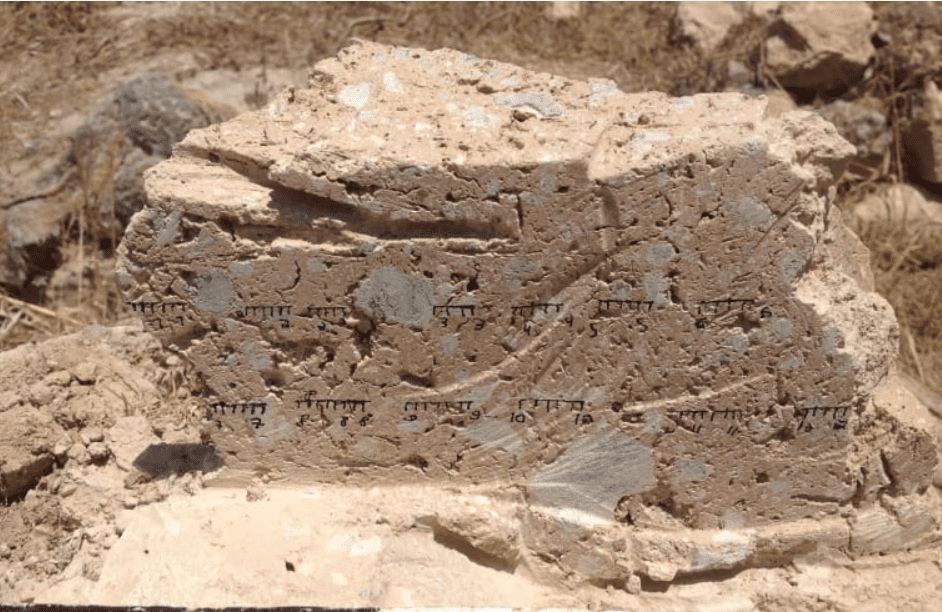
Researchers at four Israeli universities have corroborated the occurrence of an event described in the Bible’s second book of Kings, the conquest of the Philistine city of Gath by Hazael, King Aram, using a “breakthrough” technology based on measuring the magnetic field recorded in burnt bricks.
The discovery, achieved by scientists from Tel Aviv University, the Hebrew University of Jerusalem, Bar-Ilan University in Ramat Gan, and Ariel University in Samaria, will make it possible for archaeologists to identify burnt materials discovered in excavations and estimate their firing temperatures. They wrote in the journal PLOS ONE, “Our findings are important for determining the intensity of the fire and the scope of destruction in Gath, the largest and most powerful city in the land at the time, and also for understanding construction practices in the region.”
Applying their method to findings from ancient Gath (Tell es-Safi, located between the cities of Ashkelon and Beit Shemesh in central Israel), the researchers validated the biblical account: “About this time. Hazael King of Aram went up and attacked Gath and captured it. Then he turned to attack Jerusalem” (2 Kings 12, 18). They explain that, unlike previous methods, the new technique can determine whether an item such as a mud-brick underwent firing even at relatively low temperatures, from 200°C and up. This information can be crucial for correctly interpreting the findings.
Clays are rich in magnetic-iron minerals, depending on the local geology. Yet, it is common to all iron-bearing clay minerals that, when they are heated to temperatures starting from about 150°C and up to 700°C, they are transformed into stable ferrimagnetic minerals such as magnetite, maghemite, and hematite.
View this post on Instagram
Dr. Yoav Vaknin led the multidisciplinary study from TAU’s Nadler Institute of Archaeology Entin Faculty of Humanities and HU’s palaeomagnetic lab. Other contributors included Prof. Ron Shaar at HU’s Institute of Earth Sciences; Prof. Erez Ben-Yosef and Prof. Oded Lipschits from TAU’s institute; Prof. Aren Maeir from BIU’s Martin (Szusz) Land of Israel studies department; and Dr. Adi Eliyahu Behar from Ariel’s the Land of Israel studies and archaeology department and its chemical sciences department.
Lipschits explained, “Throughout the Bronze and Iron Ages, the main building material in most parts of the Land of Israel was mud bricks. This cheap and readily available material was used to build walls in most buildings, sometimes on top of stone foundations. That’s why it’s so important to understand the technology used in making these bricks.” During the same era, dwellers of other lands like Mesopotamia, where stone was hard to come by, would fire mud bricks in kilns to increase their strength and durability.
Vakin added, “This technique is mentioned in the story of the Tower of Babel in the book of Genesis. They said one to another, ‘Come, let us make bricks and fire them thoroughly, so they used brick for stone.’ Most researchers, however, believe that this technology didn’t reach Israel until much later with the Roman conquest; until that time, the inhabitants used sun-dried mud bricks.
